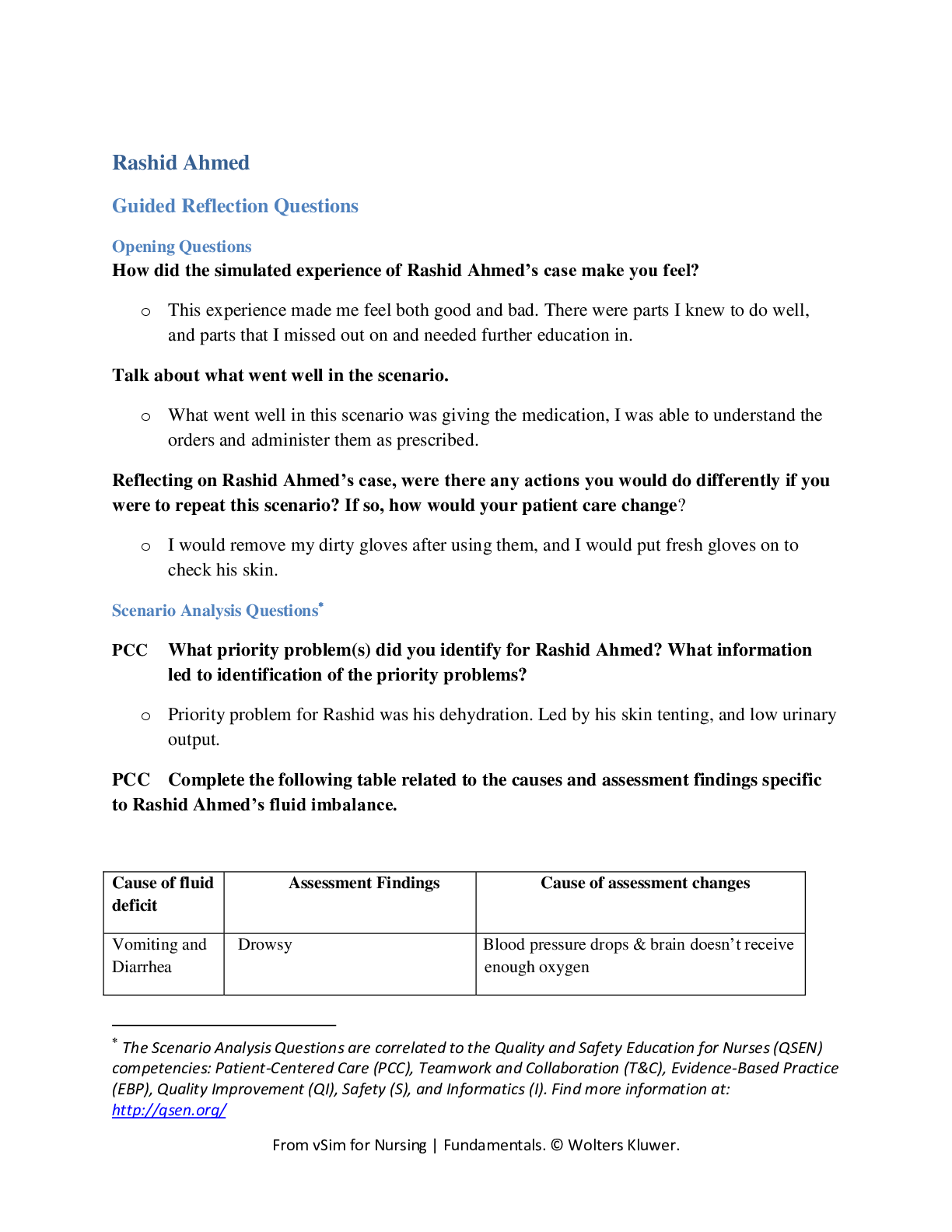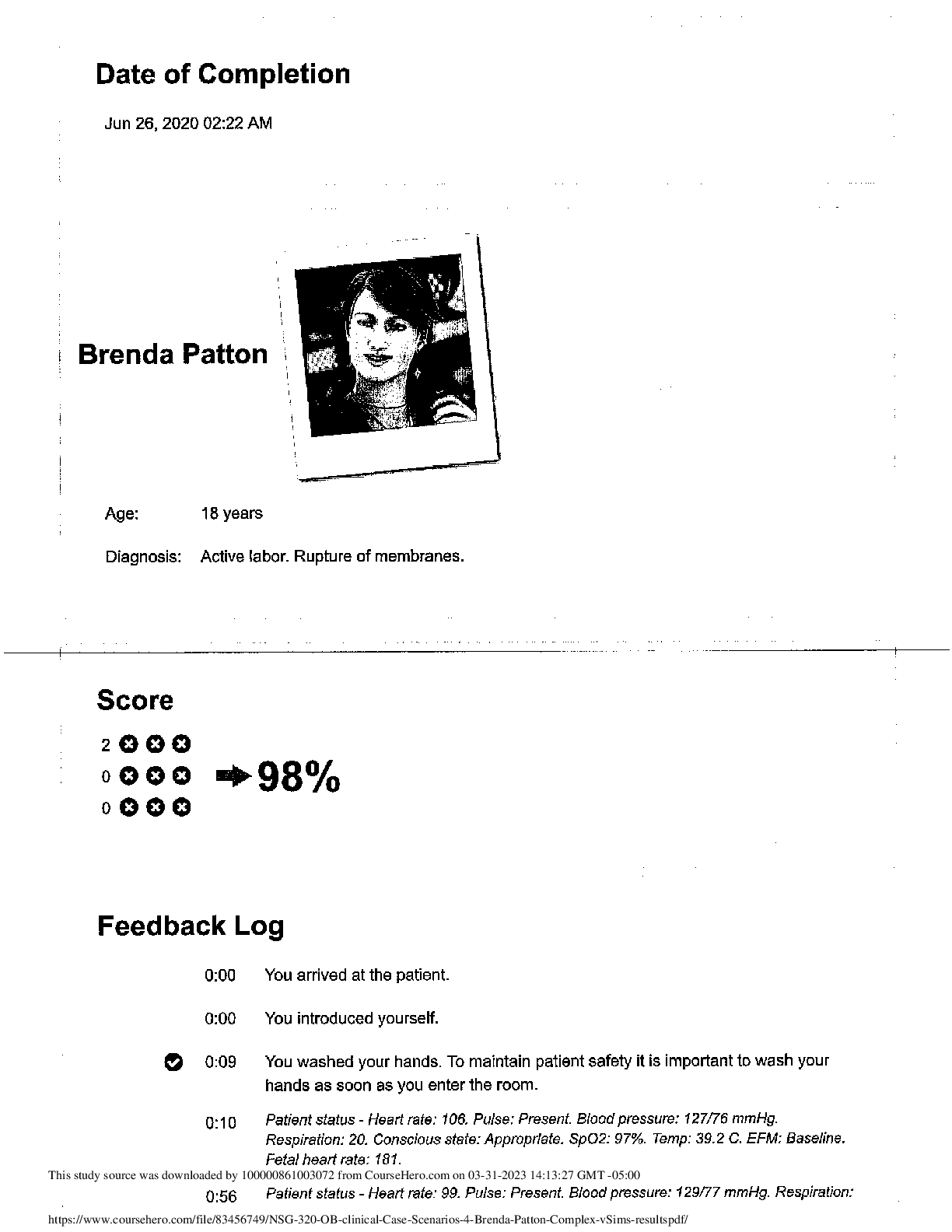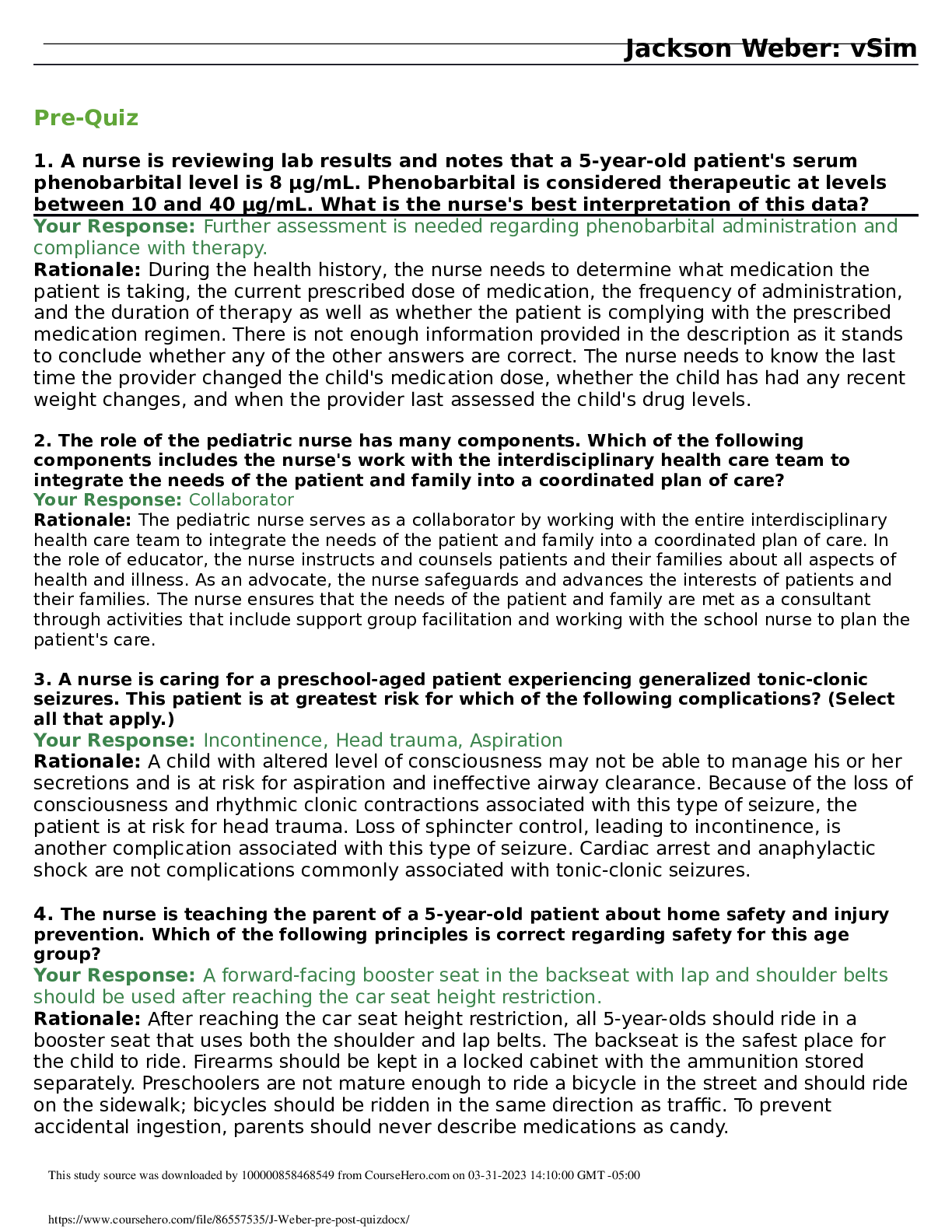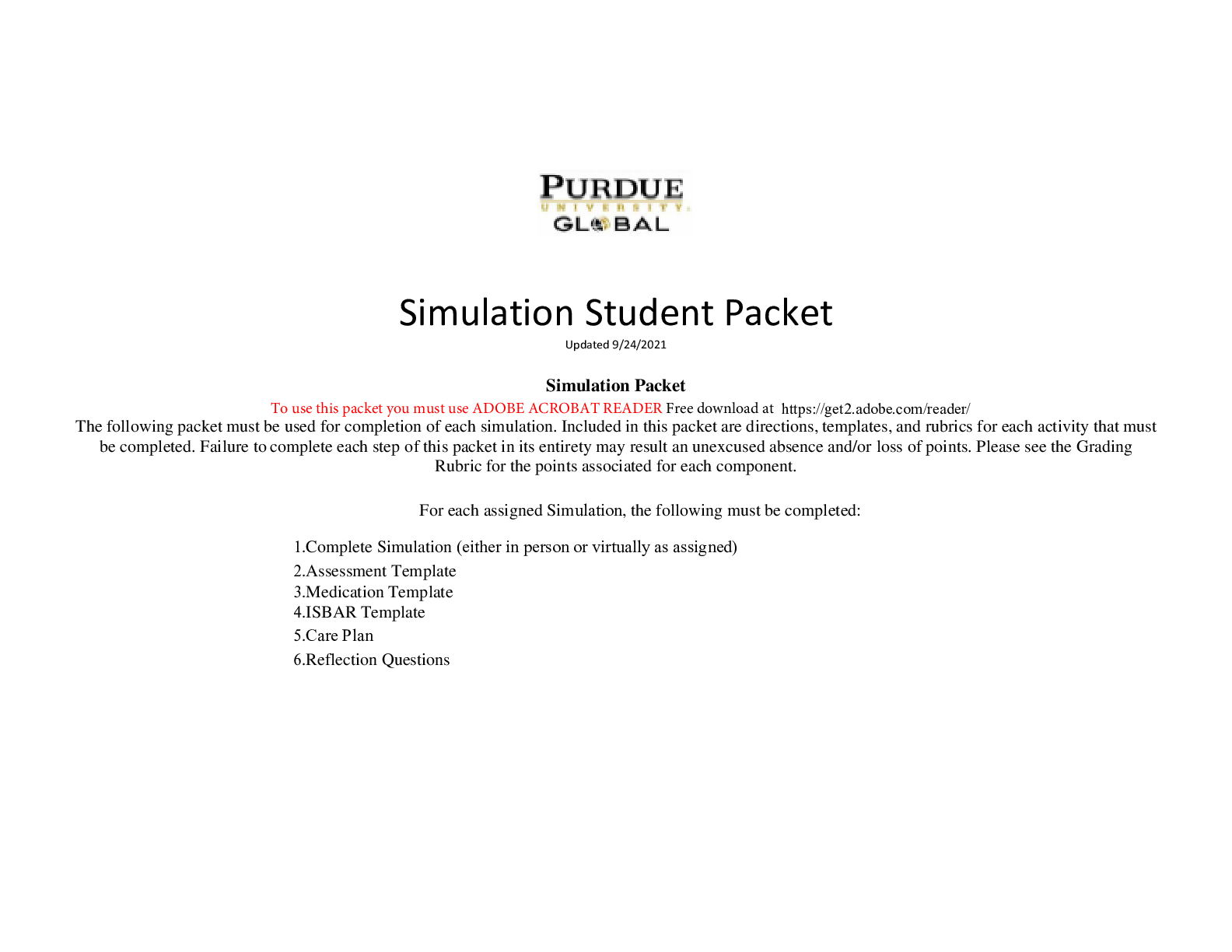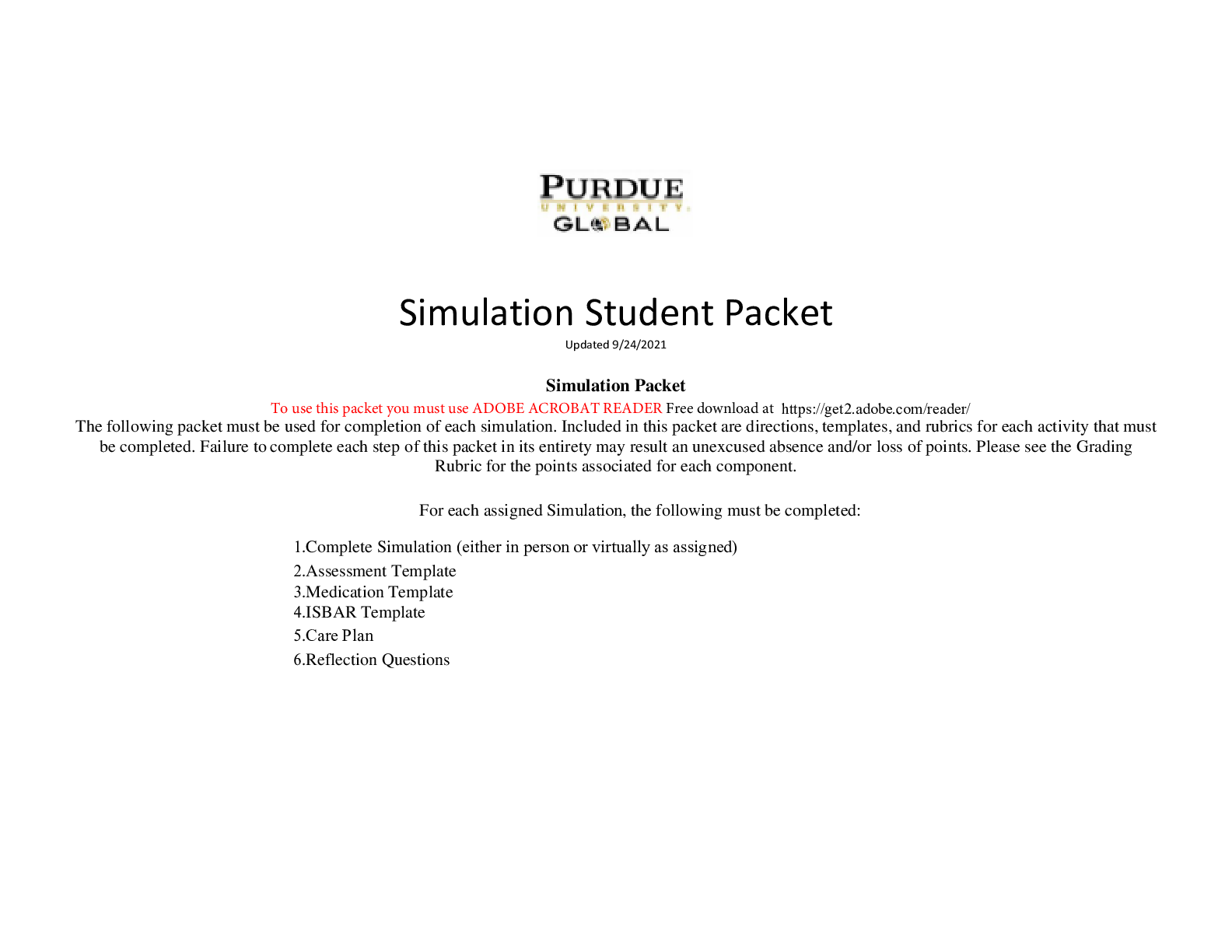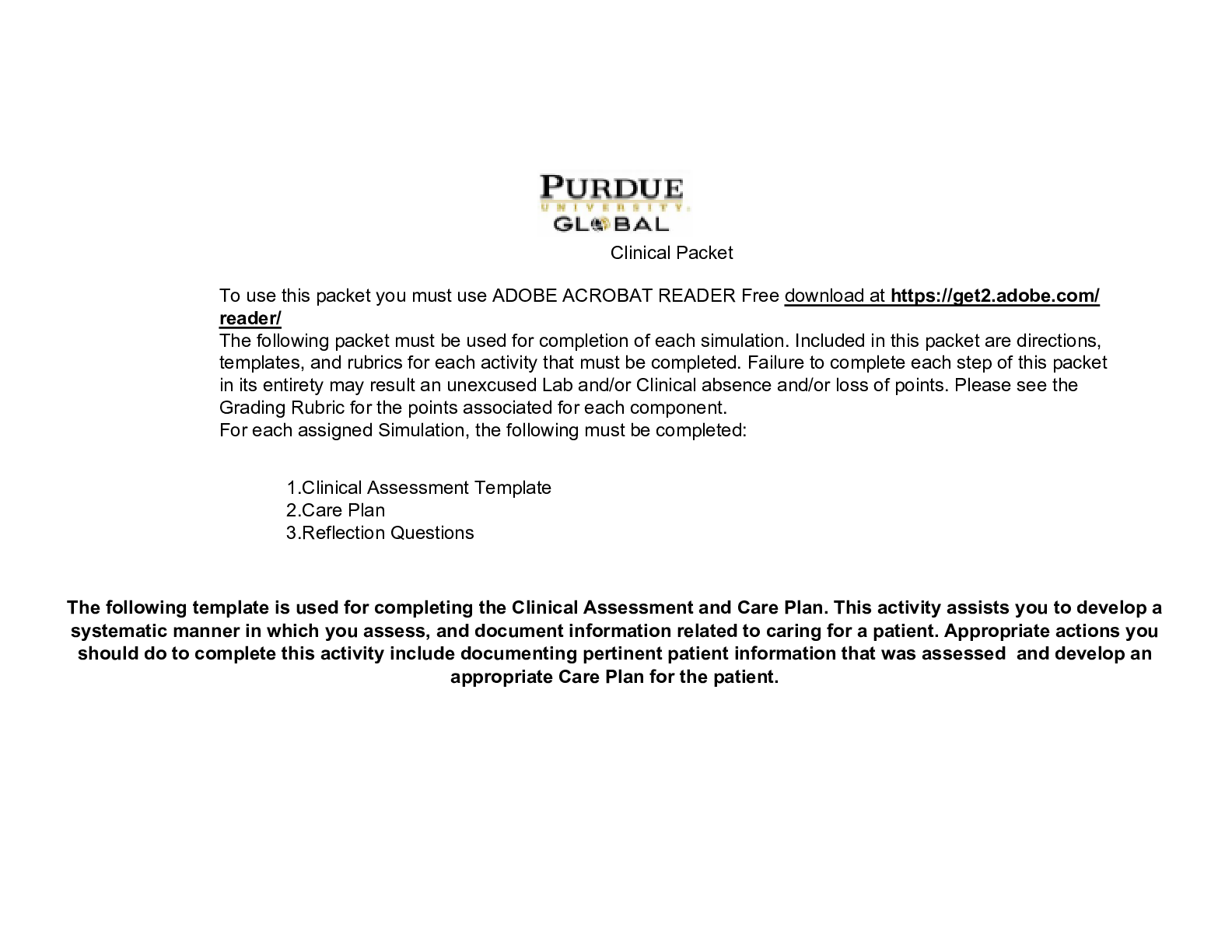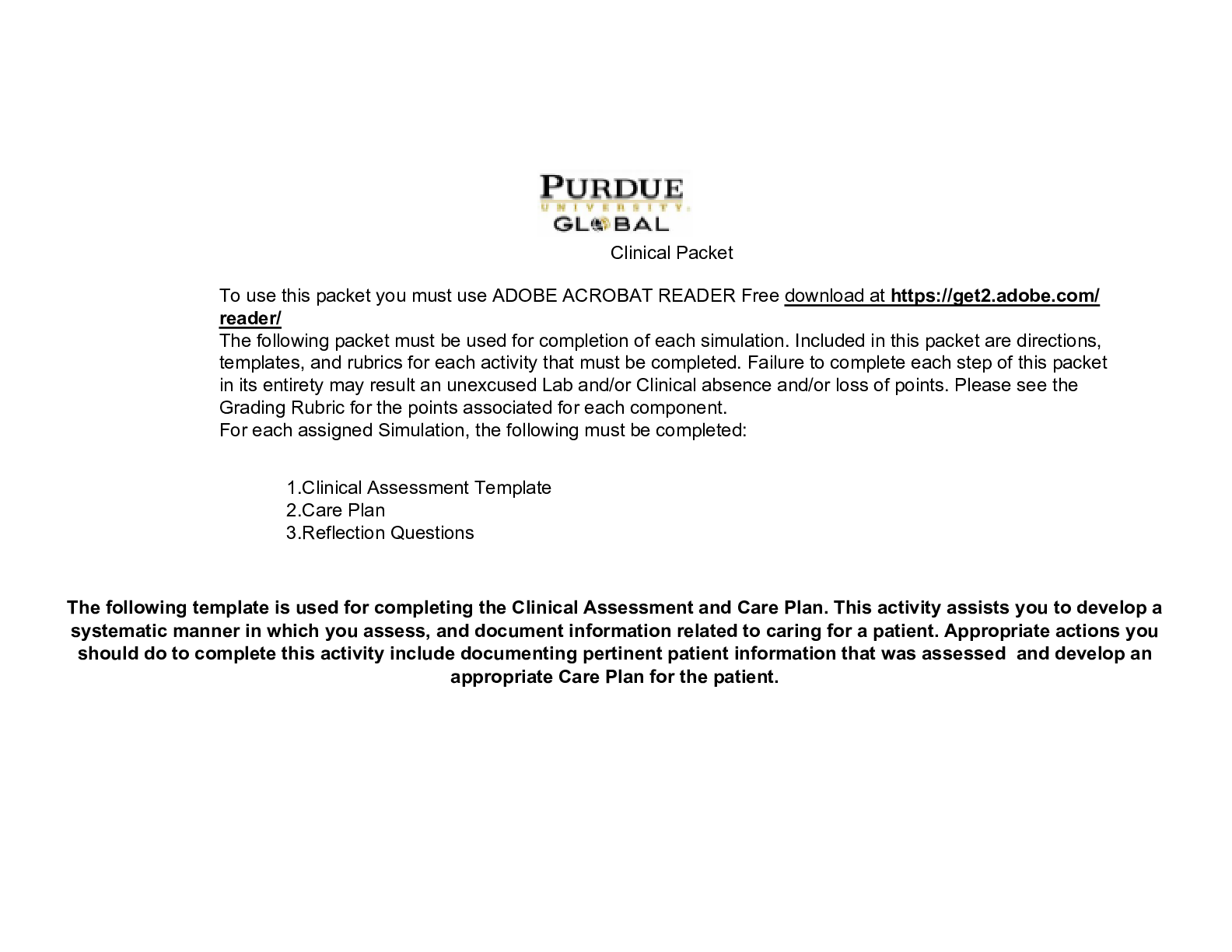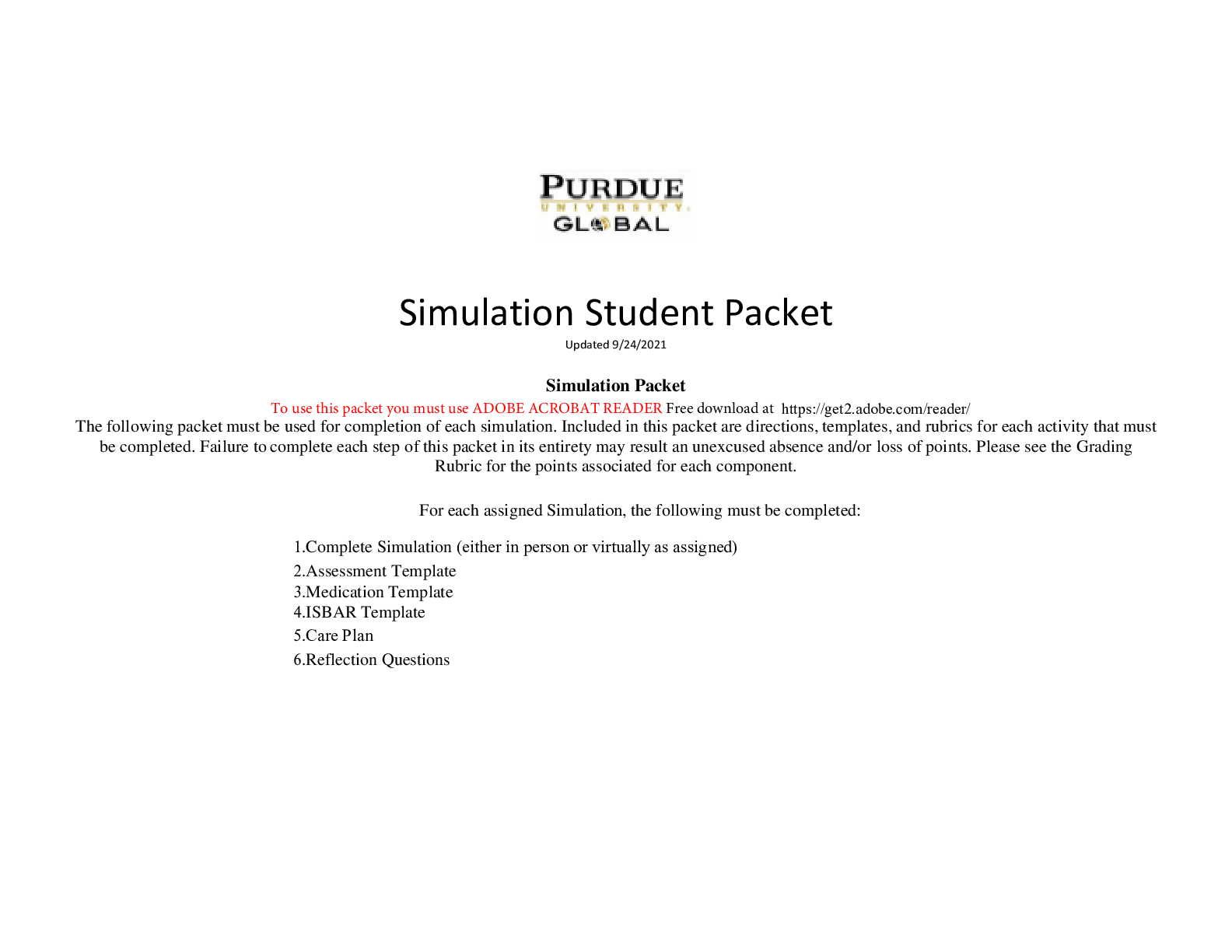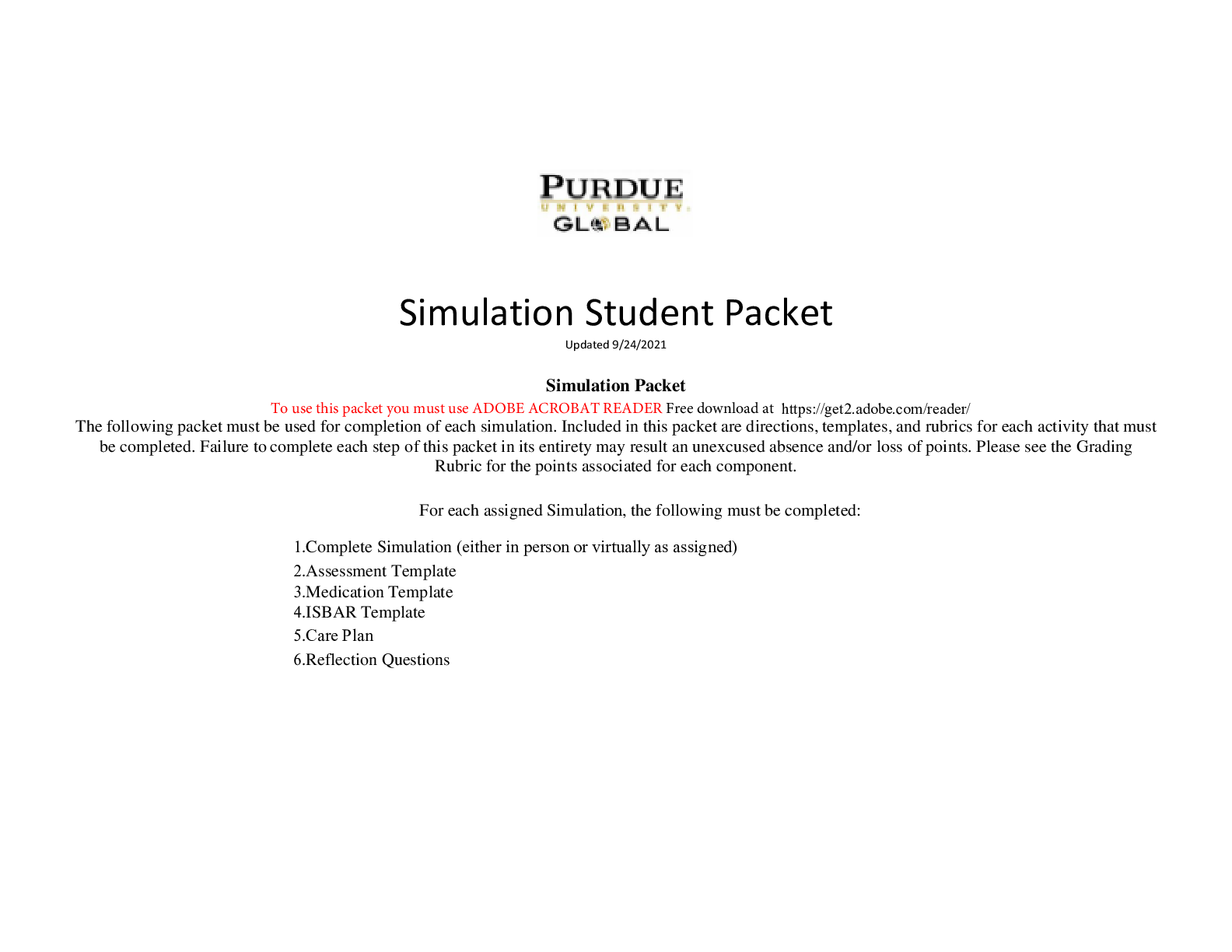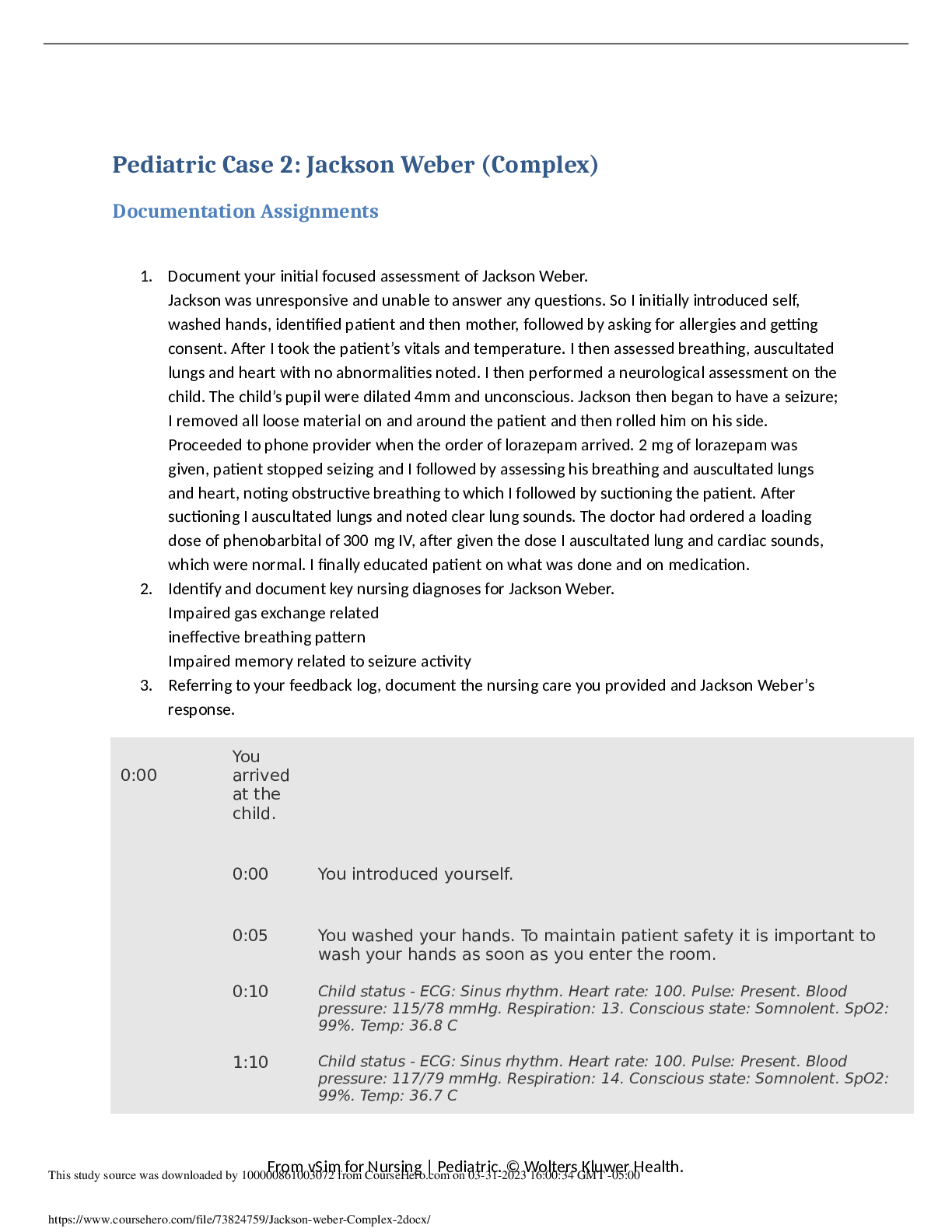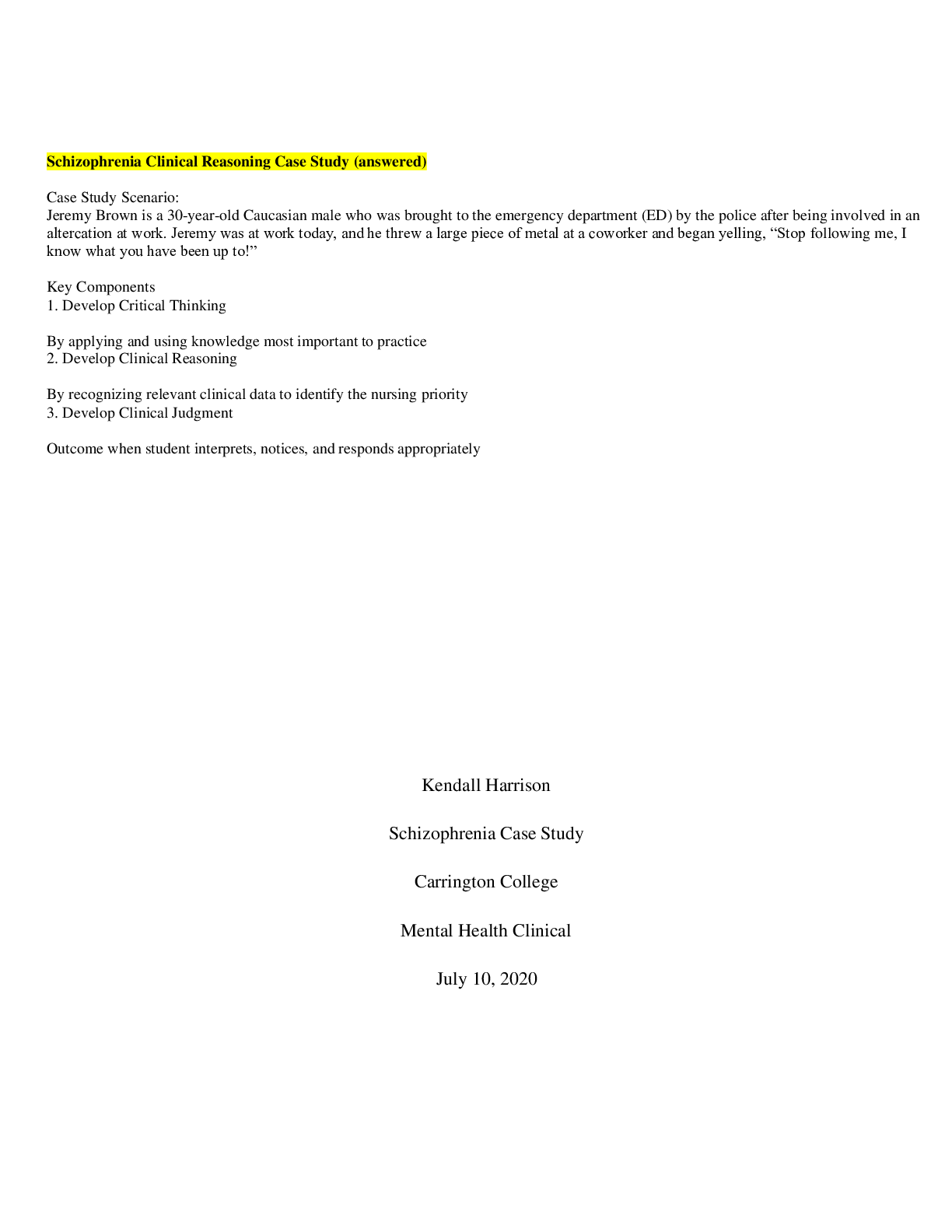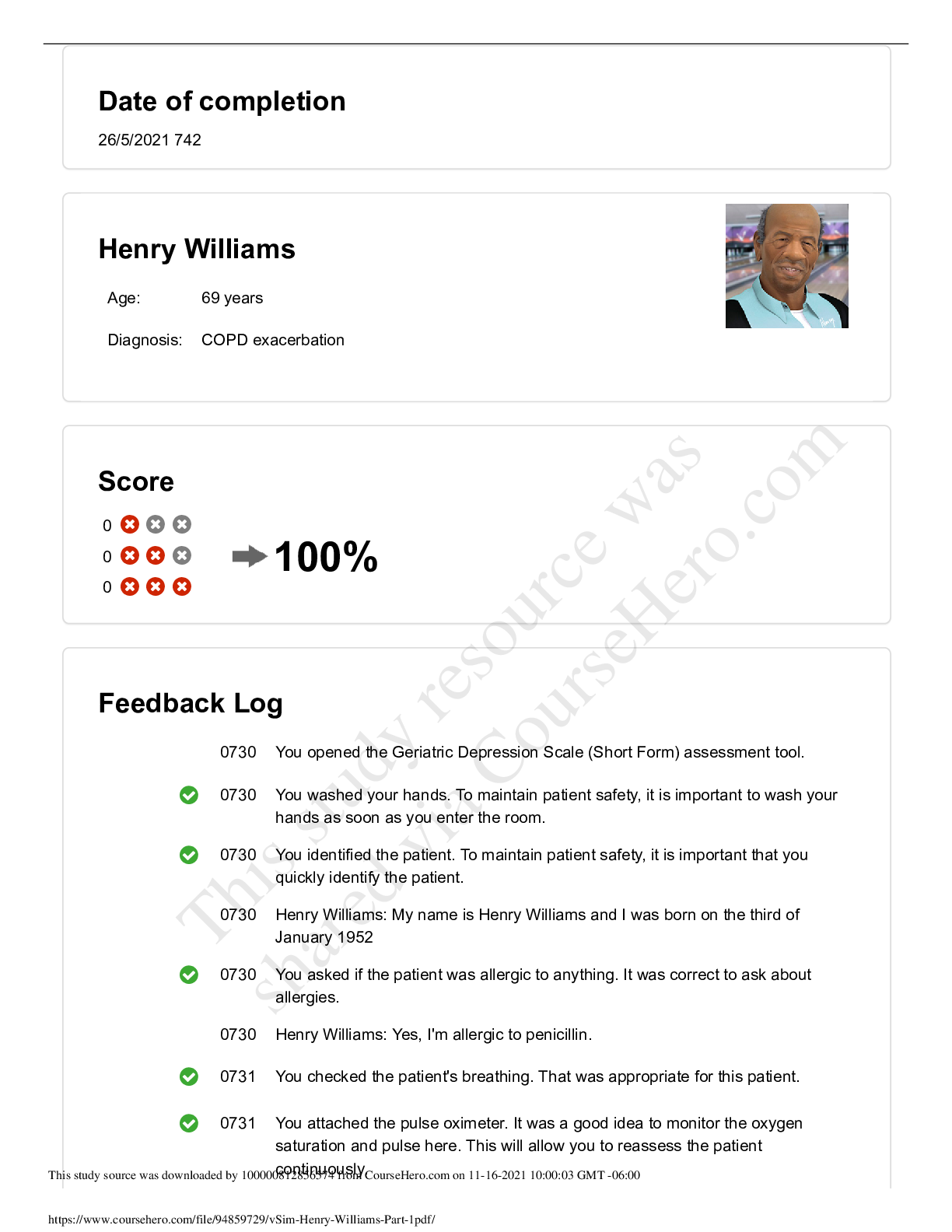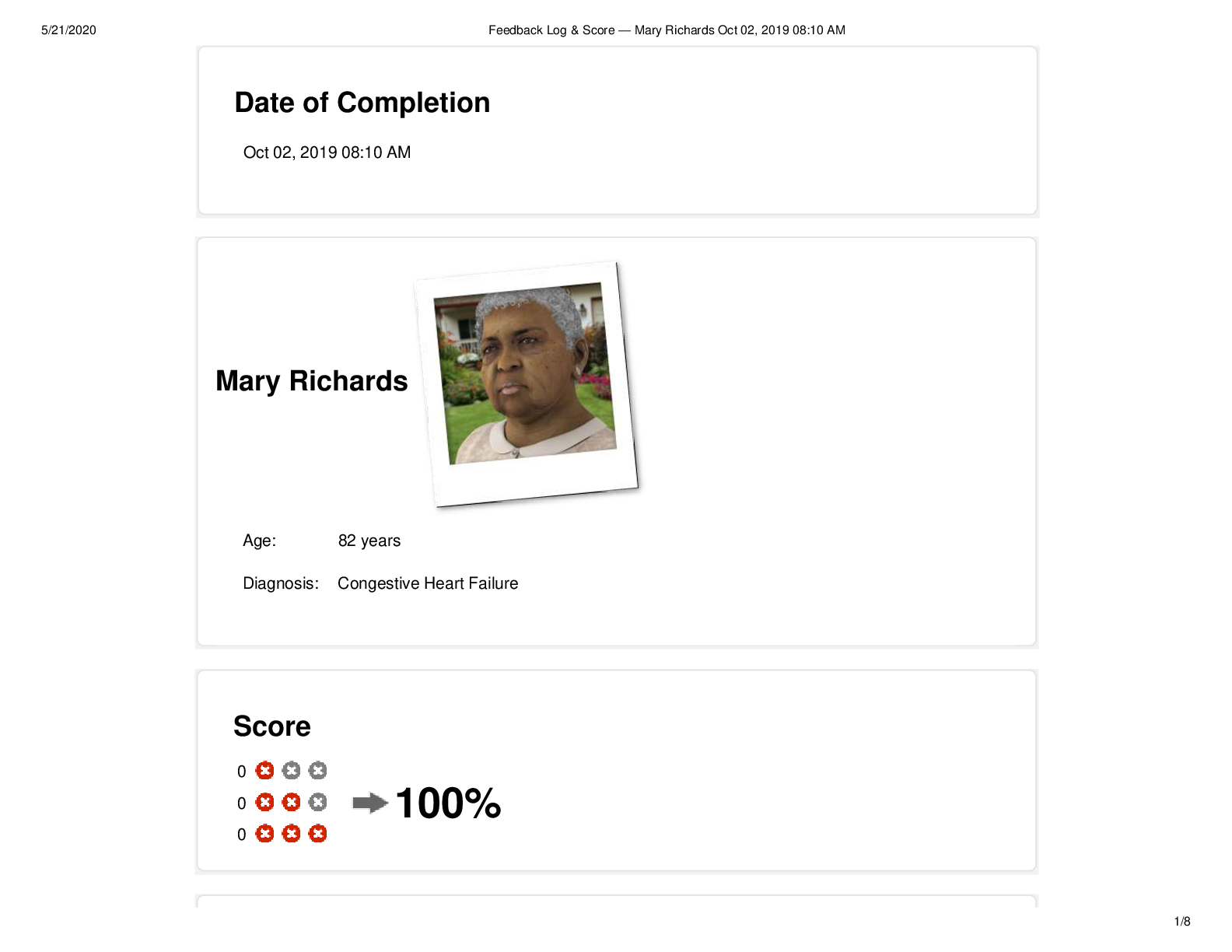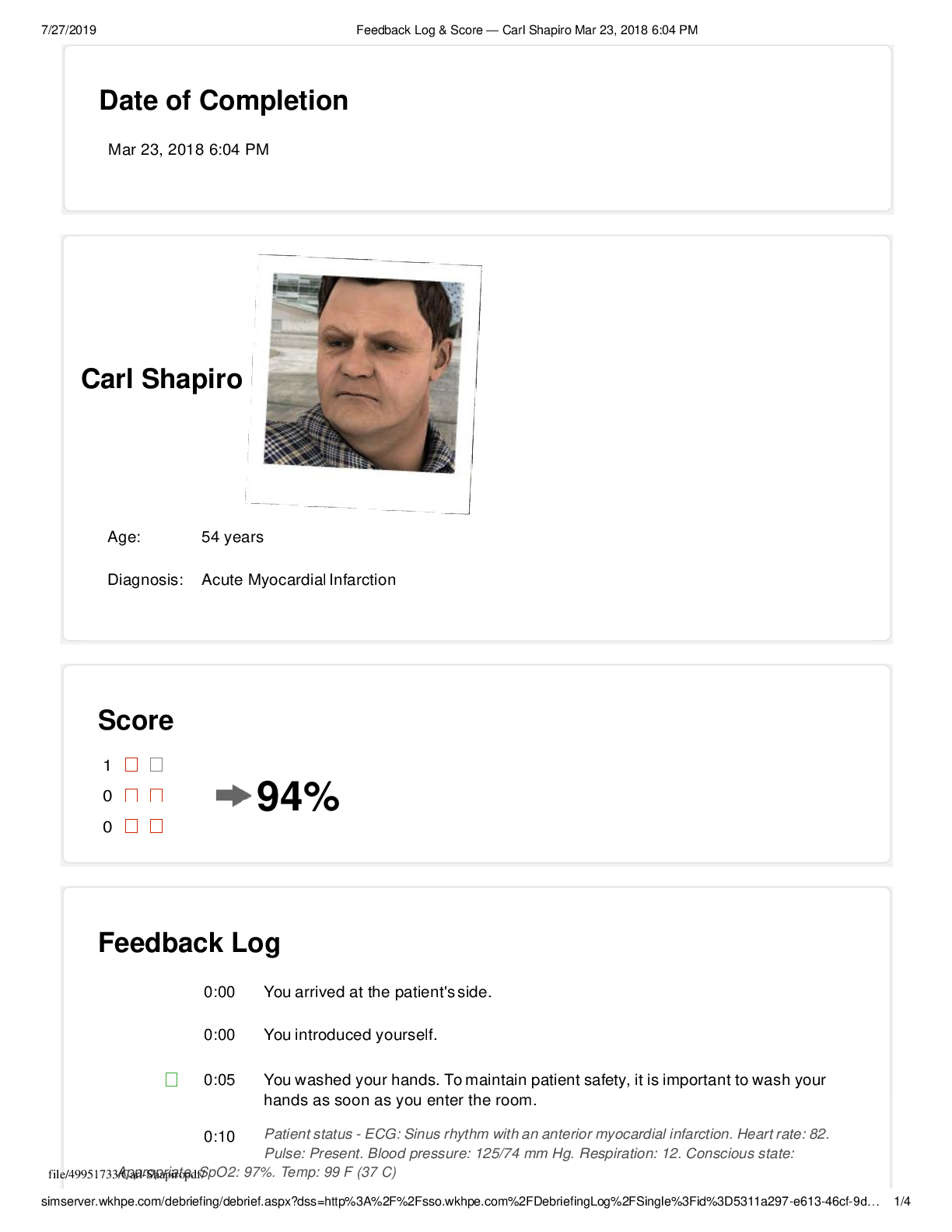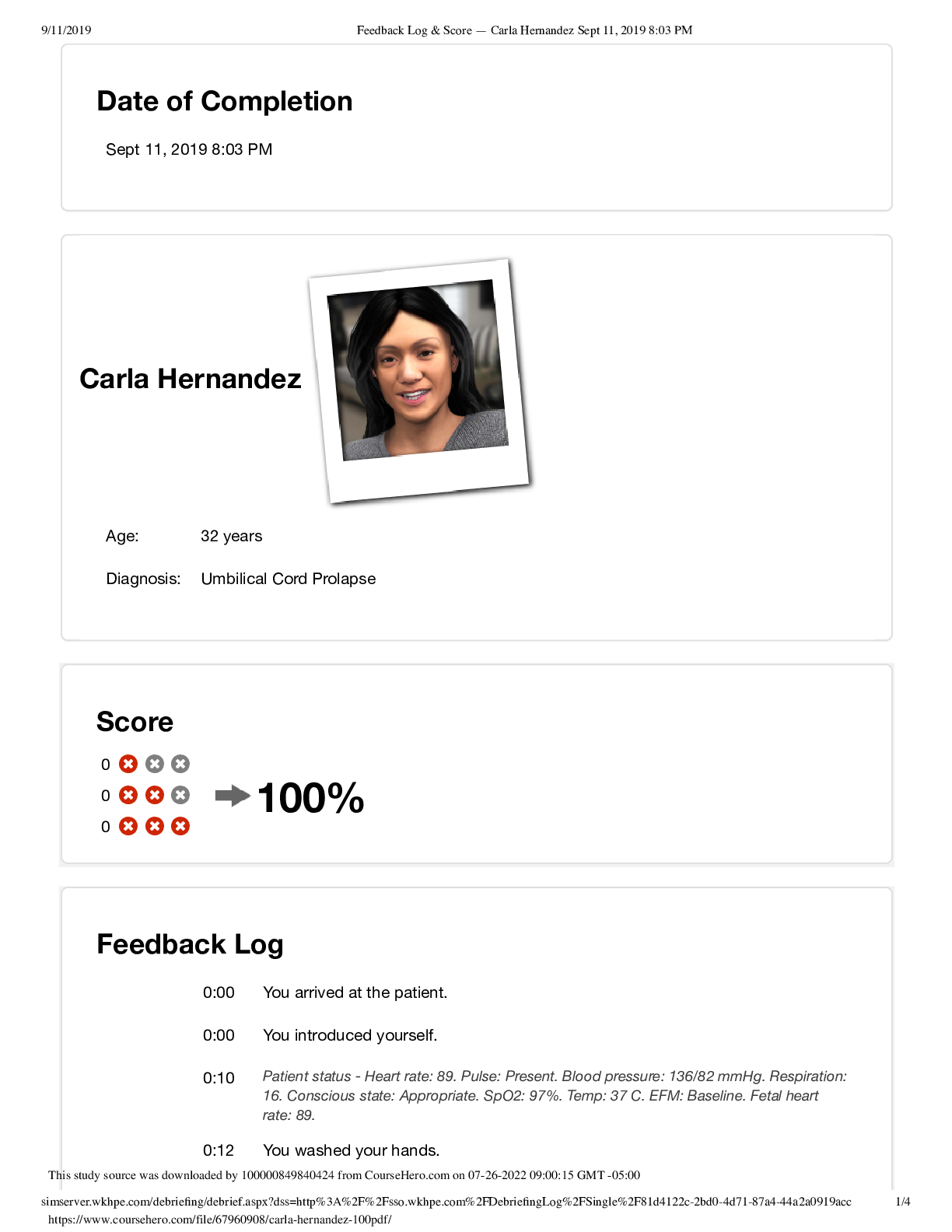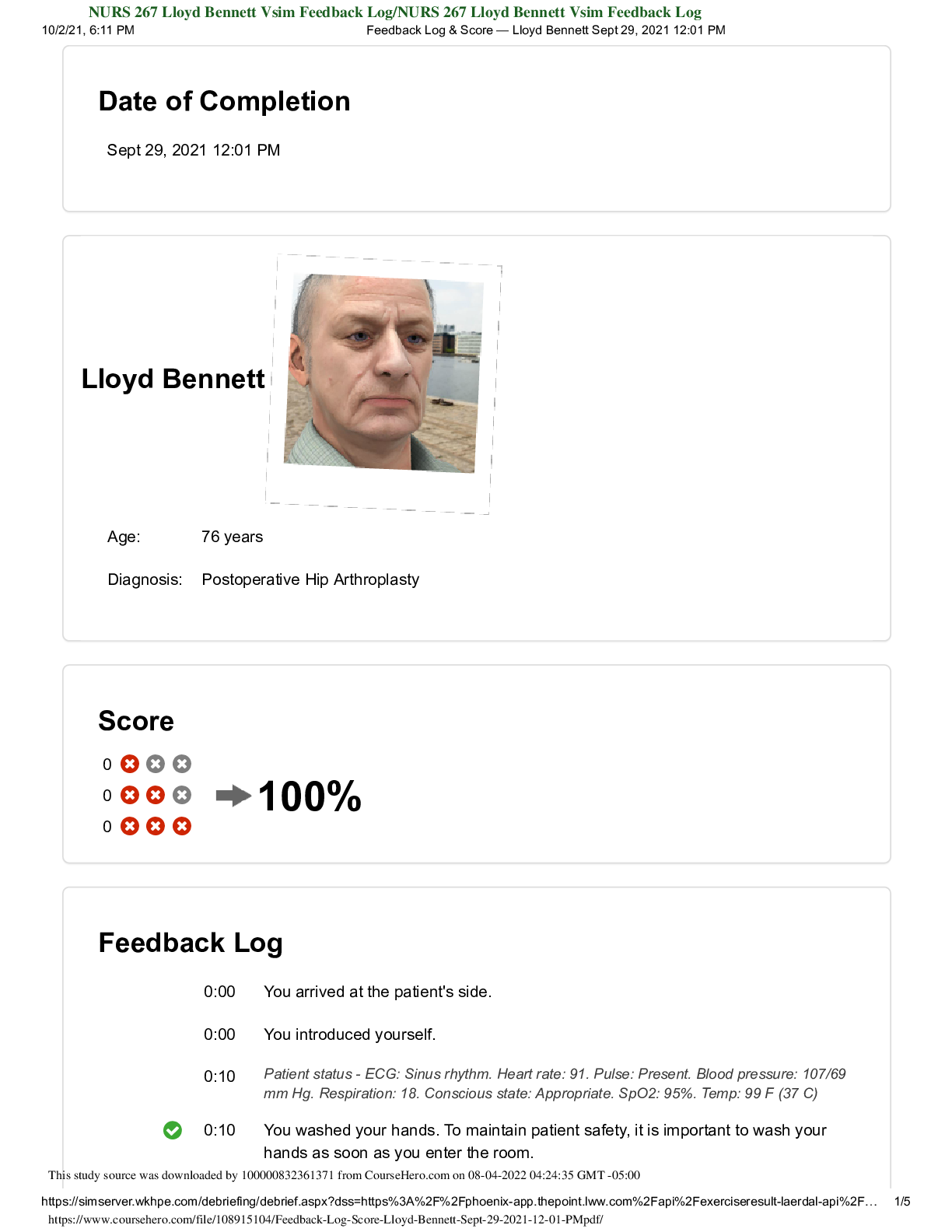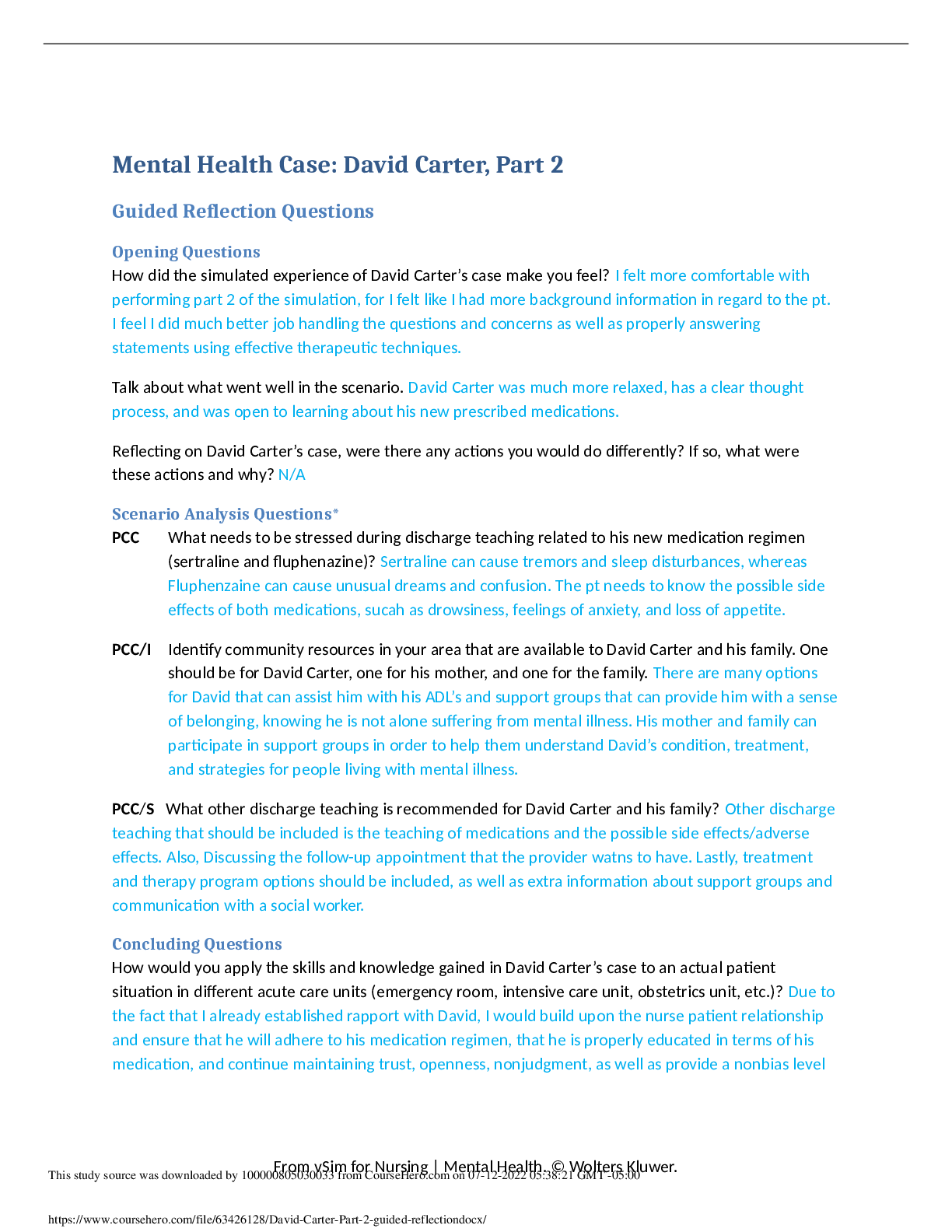*NURSING > vSim For Nursing > NU 225 225 - Purdue Global University_Simulation Information Eva Madison Pediatric Nursing_vSim Info (All)
NU 225 225 - Purdue Global University_Simulation Information Eva Madison Pediatric Nursing_vSim Information
Document Content and Description Below
Simulation Information Eva Madison Pediatric Nursing Patient Introduction Eva Madison is a 5-year-old female who just arrived to the pediatric floor from the emergency department, where she arrived... at 7:00 AM with a 3-day history of vomiting and diarrhea, inability to keep fluids down, and no urination since 8:00 PM yesterday. At her last check-up a few months ago, her weight was 21.2 kg, and today her weight is 20.5 kg. She is pale and listless, and her mucous membranes are dry. An intravenous saline bolus of 400 mL was started in the emergency department and has just finished. Maintenance fluids are to follow. Pre-Quiz 1. A 5-year-old patient comes to the emergency room with a 3-day history of vomiting and diarrhea. The patient weighed 21.8 kg 1 month ago at a well-child checkup and now weighs 20.5 kg. The nurse knows that the patient would be classified as having which of the following levels of dehydration? Your Response: Moderate dehydration Rationale: The patient weighed 21.8 kg prior to the illness and presented to the emergency room weighing 20.5 kg. A difference of 3% to 4% weight loss indicates mild dehydration, 6% to 8% indicates moderate dehydration, and 10% or greater indicates severe dehydration. The patient lost 1.3 kg of weight. To determine what percentage of weight the patient has lost, divide the amount lost by the starting weight: 1.3 ÷ 21.8 = . 059633 kg. Move the decimal two places to the right to convert the number to a percentage and round to the nearest whole number: 6%. Thus, the change in the patient's weight equals a 6% weight loss, so the patient is moderately dehydrated. 2. The nurse is obtaining a health history for a patient showing signs of dehydration. Which of the following are considered risk factors for dehydration? (Select all that apply.) Your Response: Excessive burns, Diabetic ketoacidosis, Vomiting Rationale: Risk factors for dehydration include the following: diarrhea (not constipation), vomiting, decreased oral intake, sustained high fever (not hypothermia), diabetic ketoacidosis, and excessive burns. 3. A nurse caring for a 5-year-old patient admitted with dehydration has an order to collect a stool specimen to test for ova and parasites. The patient is ambulatory and has a recent history of diarrhea and vomiting. What is the best method to use to collect the stool specimen from this patient? Your Response: Have the patient urinate first and then place a clean container under the seat at the back of the toilet to collect the specimen. Rationale: For ambulatory patients, the patient must first urinate in the toilet, and then the stool specimen may be retrieved from the new or clean collection container that fits under the seat at the back of the toilet. It is important to keep urine from contaminating the stool specimen. For the bedridden patient, the stool specimen should be collected using a clean bedpan, but this patient is ambulatory. If the patient is in diapers, the stool specimen may be collected by scraping the specimen into a container with a tongue blade. If the patient is diapered and has runny stools, the specimen can be collected utilizing a piece of plastic wrap in the diaper to catch the stool or by application of a urine bag to the anal area to collect the specimen. 4. The nurse is caring for a 5-year-old patient with dehydration and hypovolemic shock. The patient received a 400-mL bolus of normal saline over 15 minutes. On reassessment, which of the following findings would indicate that the patient's condition is improving? Your Response: Increased urine output Rationale: Following administration of an isotonic crystalloid bolus (normal saline or lactated Ringer's), the nurse would expect to see an improvement in systemic perfusion as indicated by a decrease in heart rate and capillary refill time and an increase in blood pressure, oxygen saturations, urine output, and strength of peripheral pulses. 5. The nurse is assessing a 5-year-old patient with a several-day history of vomiting and diarrhea. Which of the following signs would indicate that this patient is severely dehydrated? (Select all that apply.) Your Response: Deeply sunken orbits, Cool, mottled extremities Rationale: Assessment findings with severe dehydration include deeply sunken orbits, dry oral mucosa, tenting skin, increased heart rate progressing to bradycardia, and cool, mottled, or dusky skin color with significantly delayed capillary refill. 6. The nurse is preparing a 5-year-old patient for a clean-catch urine specimen collection. Which of the following demonstrates that the nurse understands developmentally appropriate communication? [Show More]
Last updated: 1 year ago
Preview 1 out of 10 pages

Reviews( 0 )
Document information
Connected school, study & course
About the document
Uploaded On
Apr 09, 2023
Number of pages
10
Written in
Additional information
This document has been written for:
Uploaded
Apr 09, 2023
Downloads
0
Views
51


